Today we made the short drive from Caesarea up to Akko (the Hebrew name for Acre) on the Mediterranean coast. It was about an hour drive, and took us through Haifa which was
pretty busy in late morning and made us anxious enough to stop and buy gas in case we were stuck in traffic. It was actually the first large city traffic Phyllis had encountered on this trip and was a bit challenging. Along the way, we passed more people waving Israeli flags on bridge overpasses, demonstrating against the current controversial proposed legislation gutting the judiciary. We've seen this many places but understand it is not making much difference. Again, politics here seem as divisive as back home.
We made it to the Akko Old City at about 11:00. This was the major port for the later Crusades and the site of impressive fortifications from a variety of conquerors. The Orders
of both the Templars and the Hospitallers had fortresses here, and the Hospitallers were especially known for their medical skills. After finding our way to the free parking lot in the former moat, we first visited the Treasures in the Wall Museum, which contains displays of artifacts of everyday life and crafts from the 19th and early 20th centuries. Phyllis was struck by how much one of the displays looked like the items from her father's old country store. (It's sobering to be of a
certain age where items from your early childhood are shown as antiques... we don't realize during our youth that we'll become antiques ourselves someday.)
On to the truly historic structures, largely from the Crusaders' presence in the 11th to 13th centuries. The citadel remains that are on display for modern visitors are largely of the Hospitallers; little remains of the Templars' fortress. Starting at the new visitors center we passed through the Knights Hall (Hospitaller) and out into the market area, stopping for a
lunch of mixed shishlik, kabob-type meat on a stick. Then we wandered down to the chief remains from the Templar structures, a 500-foot-long tunnel that ran from one of their fortresses to the harbor. One might think these Templars were all pretty short, but actually there is a wooden walkway through the tunnel to keep visitors a couple of feet above the tidal waters that flow through continuously. After exiting on the waterfront we walked around the harbor seeing the fortress foundations offshore and
then past numerous restaurants that were not open for the season yet. We turned back towards the visitors center and passed through more Turkish markets and the Turkish Bath House, which opened in 1804. Walking back towards the car we passed through active residential neighborhoods; the city is famously a vibrant mix of Jews, Christians, and Muslims. Some of them had whimsical and/or pointed exterior decorations.
Back to the Czarina, where we found that host Shuki had successfully washed and dried our load of clothes. He was enthusiastically helpful on all fronts, complementing the tiny and very eclectic cabin that from all appearances was jury-rigged together in his mother's backyard. However it had garden seating and we had beer and peanuts so all ended well.

 Acre, North District, Israel
Acre, North District, Israel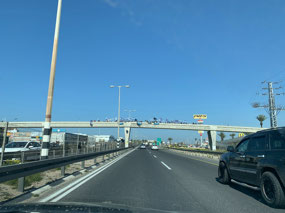
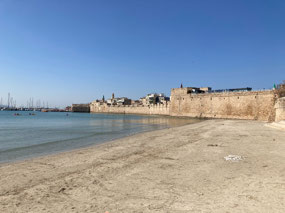
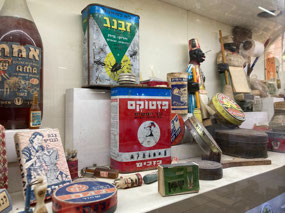
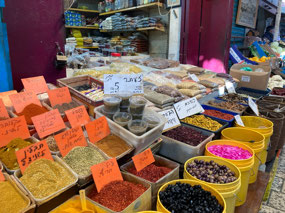

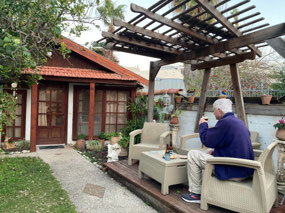




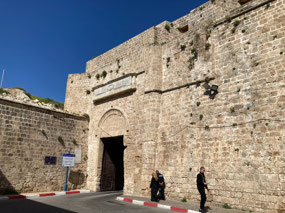
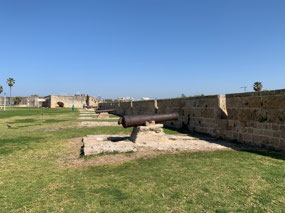
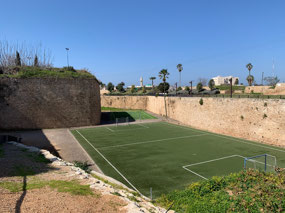
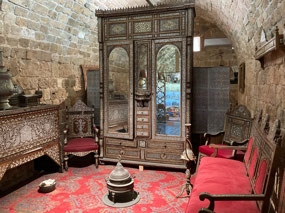
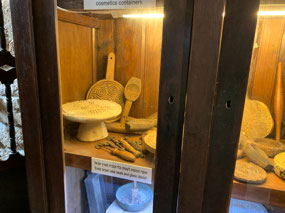
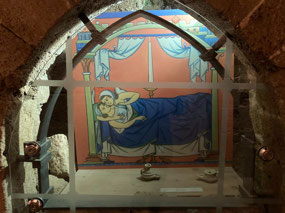
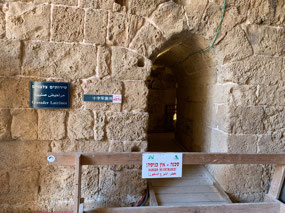

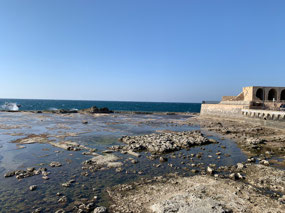


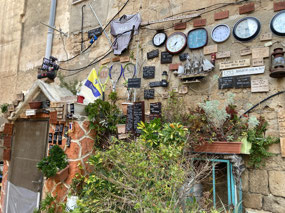
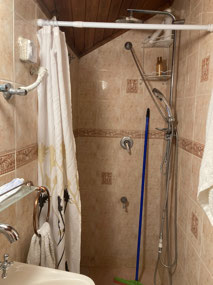
2025-05-22